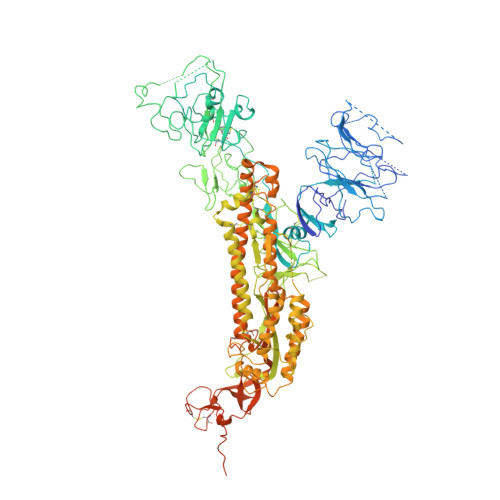A general computational design strategy for stabilizing viral class I fusion proteins.
Gonzalez, K.J., Huang, J., Criado, M.F., Banerjee, A., Tompkins, S.M., Mousa, J.J., Strauch, E.M.(2024) Nat Commun 15: 1335-1335
- PubMed: 38351001
- DOI: https://doi.org/10.1038/s41467-024-45480-z
- Primary Citation of Related Structures:
7TN1, 8E15, 8FEZ - PubMed Abstract:
Many pathogenic viruses rely on class I fusion proteins to fuse their viral membrane with the host cell membrane. To drive the fusion process, class I fusion proteins undergo an irreversible conformational change from a metastable prefusion state to an energetically more stable postfusion state. Mounting evidence underscores that antibodies targeting the prefusion conformation are the most potent, making it a compelling vaccine candidate. Here, we establish a computational design protocol that stabilizes the prefusion state while destabilizing the postfusion conformation. With this protocol, we stabilize the fusion proteins of the RSV, hMPV, and SARS-CoV-2 viruses, testing fewer than a handful of designs. The solved structures of these designed proteins from all three viruses evidence the atomic accuracy of our approach. Furthermore, the humoral response of the redesigned RSV F protein compares to that of the recently approved vaccine in a mouse model. While the parallel design of two conformations allows the identification of energetically sub-optimal positions for one conformation, our protocol also reveals diverse molecular strategies for stabilization. Given the clinical significance of viruses using class I fusion proteins, our algorithm can substantially contribute to vaccine development by reducing the time and resources needed to optimize these immunogens.
Organizational Affiliation:
Institute of Bioinformatics, Franklin College of Arts and Sciences, University of Georgia, Athens, GA, 30602, USA.














